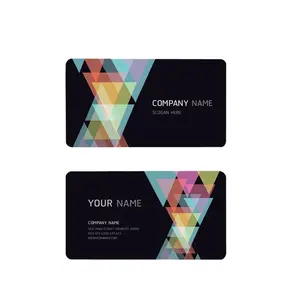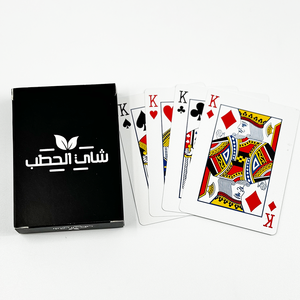(334710 products available)







































































































































































































PVC Plastic Card
PVC plastic cards are one of the most popular types available today because of their durability, flexibility, and resistance to water and heat. They are widely
used for membership cards, ID cards, credit cards, and business cards, among others. Because they are easy to print on and can be personalized using embedding and printing technologies, PVC cards can be made to have unique designs and colors. The solid feel of a plastic business card gives professional veneers and is welcomed across a diversity of industries.
PET Plastic Card
PET cards are made from polyethylene terephthalate, a recyclable alternative to PVC. Though they are heavier than PVC cards, they still offer great flexibility.
The materials are used to make event tickets, gift cards, and loyalty cards simply because they are recyclable and environmentally friendly. PET cards can also be printed in bright colors and detailed graphics, thus suitable for companies that promote ecological awareness. For plastic photo ID cards which require a high level of optical clarity, PET cards fit the purpose.
Vinyl Plastic Card
Vinyl plastic cards are made for durability and flexibility; thus, they do not become brittle or crack with regular use. Such properties make them ideal for business
license cards and waterproof swimming ID cards. Vinyl cards are also easy to customize; thus, businesses can use them to promote their brands. In addition, since vinyl cards can withstand harsh elements, they make good weatherproof card solutions for outdoor use.
Recycled Plastic Card
These plastic cards come from previous plastic materials. Thus, they are tailored for companies that want to make themselves green. Even though they are made of reused materials, recycled cards still provide basic features such as PVC cards. With enough strength for daily use, these cards minimize ecological footprints and can be printed in many attractive colors and designs.
Custom-Shaped Plastic Card
Standard custom-shaped plastic cards differ from others in that they deviate from the normal credit card size and shape. These plastic cards are not of the usual
rectangle shape and come in unique forms that make them highly distinguished. Commonly used: custom-shaped cards give customer experience boosts and brand visibility a lift. For example, a fitness club could create a custom-shaped card in the form of a dumbbell. Hotels and travel agencies can create custom-shaped cards that are a true replica of their services. The unique shape not only makes such cards impossible to hide but also makes an impact on the targeted customers.
The functions of plastic cards vary widely, from identification to promotion.
Plastic cards have many features that make them practical and adjustable.
The design of a plastic card is vital in ensuring functionality and attractiveness.
Business and Networking
Plastic cards are mainly designed for use in businesses, especially for making business cards. A plastic business card stands out from the set of usual paper cards
because it communicates uniqueness and modernity to prospects. Plastic materials are solid, which allows the cards not to be easily destroyed or shaped. The scrolling designs possible with plastic cards also enable companies to bring a design that tells their brand story. Thus, the card creates a lasting impact on potential clients and partners.
Identification and Security
Plastic cards are important in industries that put security and identification at the forefront, such as healthcare, education, and government. These uses range from
employee ID cards, which differentiate individuals granted access to certain areas from those not, to patient cards in hospitals that allow health access tracking. Plastic cards come embedded with security features such as barcodes, magnetic strips, and wearable technology for enhanced access control and data capture. These features aid practical identity verification and contribute to increased security within the facilities.
Loyalty and Membership Programs
Retailers and service industries use plastic cards for customer loyalty and membership programs. By tracking patronage with plastic loyalty cards, retailers can reward customers with discounts or points, giving them a sense of recognition and gratification.
This practice increases customer retention and boosts sales. Plastic cards in fitness centers and clubs provide members with personalized access to services, promotional updates, and membership status. Such cards deepen customer engagement and satisfaction.
Event Access and Ticketing
Plastic cards provide a practical and attractive solution for events such as concerts, conferences, or exhibitions. These cards may be printed with unique designs to form a memorable keepsake for the event. Moreover, embedded security features such as QR codes or barcodes may be used for function verification and fraud protection.
Brand Marketing and Promotion
These plastic cards are powerful promotional tools companies give to customers or prospects. With a variety of printing and design options available, these cards may be customized to spread the word about a certain product or service.
These cards promote brand recognition and, because of the hold and use, provide a distinct value over other marketing mediums. Further, due to the versatility and durability of plastic cards, companies can use them across various industries for different purposes.
Material
Plastic card types are different materials and offer unique advantages. PVC cards are durable, flexible, and waterproof, and thus are the most widely used.
PET cards provide a recyclable alternative that is environmentally friendly but quite stiff. Vinyl cards are flexible and waterproof, well suited for outdoor applications. The plastic card suited for the purpose intended will depend on personal preference, eco concerns, and intended card use.
Thickness
Plastic cards come in various thicknesses, commonly from 0.76 mm (standard credit card thickness) to 1.0 mm. A more thicker card gives a more premium feel and enhances the card’s potential to withstand day-to-day wear and tear.
A thinner card is more cost-effective, lighter, and easier to handle. The standard used in thickness will depend on the application intended—for business and membership identification—and demand for general use and impression.
Customization Options
Plastic card customization options available include color, shape, finish, and additional features. Plastic cards are attractive and distinct through colors added by printing techniques.
Card shape also can go beyond the standard rectangle to creative designs that uniquely reflect one's business or purpose. Matte and glossy finishes could signal different impressions and handling textures. Additional features like barcodes, QR codes, and magnetic strips enhance functionality purposes, such as tracking and identification. Choosing suited customization options for brand values and customer interests will assure the card's effectiveness in the plastic card.
Purpose and Use Case
Identifying the main function of the plastic card will help guide the selection of material, design, and features. Business cards use PVC cards, while Event tickets favor PET cards, with membership cards and ID badges made from vinyl plastic cards, etc.
Other considerations are security levels for personalized cards and eco-friendly cards for business priorities. Understanding the use case for the application helps ensure the card performs all necessary tasks and meets end-users' expectations.
Budget
Budget usually is an important consideration in choosing the fitting plastic card for the purpose desired. Costs typically depend on material, level of customization, thickness, and quantity required, among other factors.
This is outstanding because PVC cards are the leading standard due to their cheaper printing, while custom-shaped cards are more expensive because of their elaborate design. Thus, knowing a customer's budget allows for realistic expectations while delivering a quality product that serves its intended function without overspending.
A1: Usually, plastic cards are made of PVC. Other plastics may also be used, such as PET or vinyl, each having advantages. Recyclable PET cards offer eco-friendly alternatives. Vinyl cards are flexible and waterproof. Materials are chosen based on needs, like durability, environment use, and card design.
A2: Cards depend on usage, type of card, and conditions of the environment in which it is used. Therefore, PVC and PET plastic cards last 2–5 years under normal uses such as identification or membership. Cards designed for more rigorous usage can be extended beyond five years with proper care.
A3: Yes, unique shapes are called custom-shaped plastic cards. Generally, they offer innovative designs beyond standard rectangles. These cards help uniqueness and brand recognition. Custom materials, thicknesses, finishes, and security features can also be added to build unique plastic cards for specified applications.
A4: Many, like PVC, PET, and vinyl cards, are waterproof and well—suited to use such as membership, ID, and event admission. They protect cards from moisture and elements. Cards made strictly for outdoor usage or environments having water humidity continuously prefer waterproof cards.
A5: Printing techniques employ digital or offset printing, which allows sharply colorful, durable designs. Additional techniques for customizing cards are embossing and layering. These techniques provide a quality finish and ensure the card represents brand design or purpose effectively.